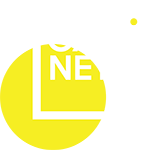- Tomasz Stępiński-Ustasiak
- 26 March 2022
- News
While the Internet of Things is to help people connect with devices and appliances and utilize their smart functions to optimize life and business processes, the Internet of Robotic Things (IoRT) is a blend of IoT and robotics.
The Internet of Robotic Things (IoRT) is a relatively new concept which foresees autonomous and smart machines communicating together and collecting vast amounts of data through sensors. The more machines and robots there are in production plants, the more often we will come across the Internet of Robotic Things (IoRT). It’s fair to say that IoRT is an expansion of the Industry 4.0 concept.
The Internet of Robotic Things (IoRT) consists of three key constituents:
- Robots or smart machines capable of reading, collecting and transferring data;
- Data analytics, reporting and visualization;
- Instant data analytics to enable the machine/ robot to perform specific actions.
Application of the Internet of Robotic Things
As already said, the Internet of Robotic Things is a relatively new concept which today primarily finds application in industry and manufacturing (Industry 4.0), and increasingly more in medicine (thanks to smart medical robots used to perform medical procedures and surgeries). But that’s not the only application for IoRT. The concept is also ideally suited to so-called smart warehouses and sorting plants where the tagging or storage processes can become fully automated. Another area for it to be applied is e-commerce and food delivery. The use of robots to deliver goods is currently in its pilot stages but it certainly represents the future of last-mile deliveries. Construction is yet another example, where in the future robots can completely overtake scaffolding erection and the performance of other repetitive tasks. Finally, it will also find application in the vast home appliances segment e.g. smart home. Cleaning and vacuuming robots (smart vacuum cleaners) are already omnipresent, but they only represent the start, with these kinds of devices set to be marketed on a mass scale.
The IoRT market will experience systematic growth. Gawinet experts predict that by 2025 interest will intensify in all sorts of web-connected machines (robots). It’s only a matter of time before hotels begin switching to autonomous concierge services, and robots will accompany hotel guests to their rooms and replenish their minibars in the process. In Poland, IoRT’s development in the near future will be mainly driven by the use of smart robots in production and manufacturing. This process is already starting. Facilitated by various financing avenues and government grant programs, we can expect the Internet of Robotic Things to not only become the next buzzword. It will also become a tangible advantage that Polish manufacturing plants understand and deploy.
